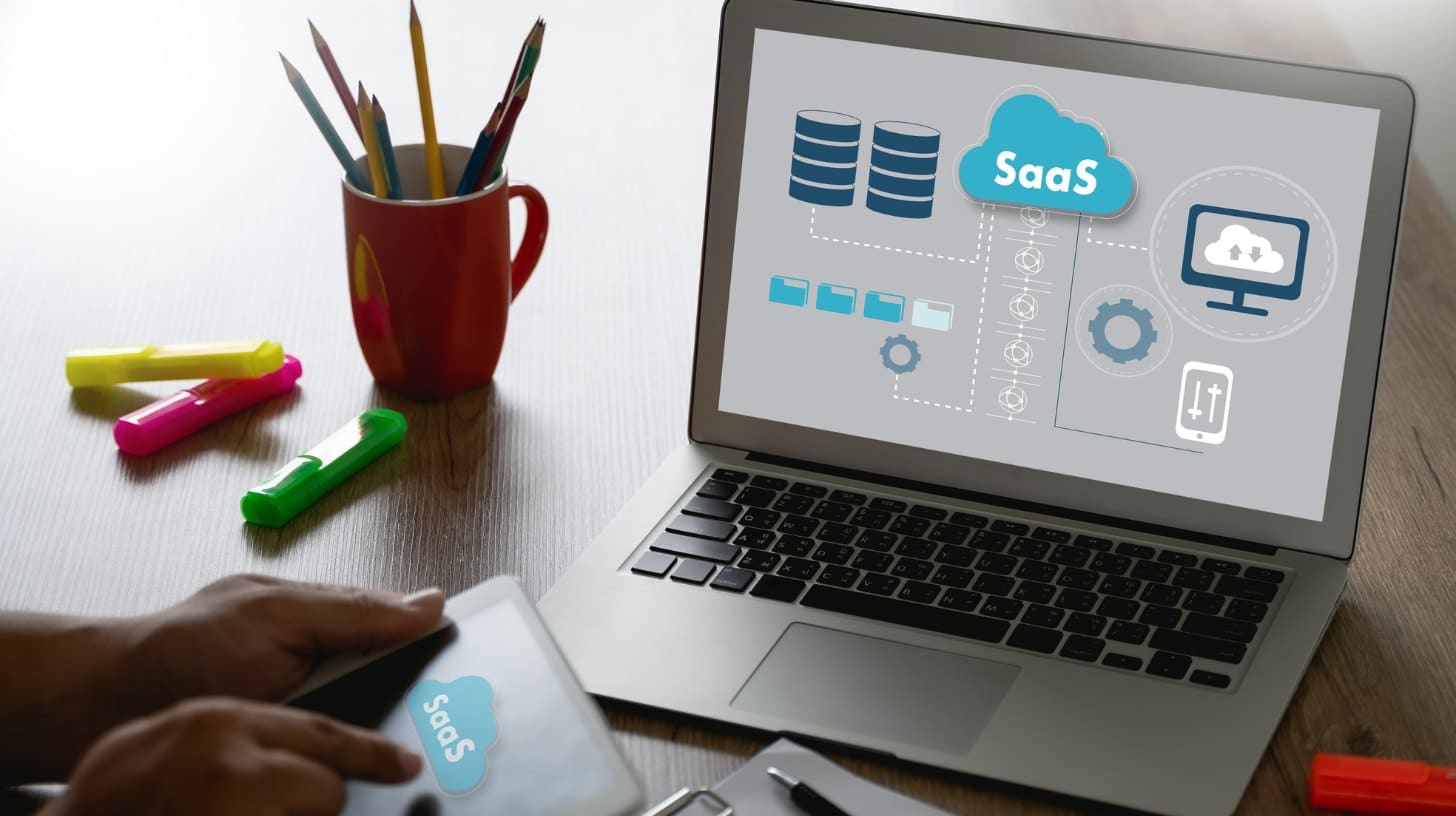I’m constantly observing how SaaS startups contemplate their pricing strategy. And for good reason they look into a freemium SaaS models.
If they underprice their offer, it could lead to a downward spiral of support and a red bottom line. If they over-price their services, then they could miss out to a less expensive competitor and never be given the opportunity to showcase the value they can deliver. But before offering premium services, how do new software companies get the attention of the masses in both B2B and B2C? By giving it away for free, of course.
One of the most memorable moves of a software company offering one of their valuable tools for free was when Microsoft launched Internet Explorer pre-installed with their Windows 95 operating system (hard to believe we used to pay for Internet browsing software back in the day).
This unprecedented power play by Microsoft launched the first browser war, catapulting them from 2% market share (of Internet browsers) to become the number one Internet browser around the world and ultimately killed their largest competitor, Netscape, within three years (even after the Department of Justice got involved, but I digress).
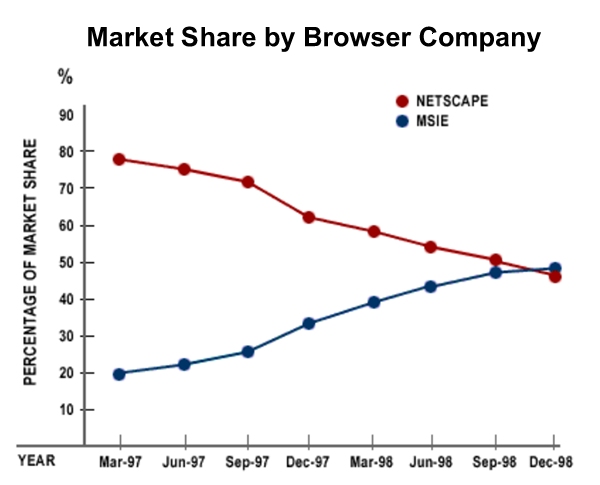
During the 1990s, Microsoft made a bold market move by offering Internet Explorer free of charge, outsmarting the dominant player at the time (Netscape).
Fast forward to 2019, free software is still in style and while the Microsoft example wasn’t technically “freemium”, it paved the path to get the consumers’ attention by offer something of value for free in hopes of cross-selling and/or upselling other products and services.
While the notion of giving away usable, feature-rich software for free has been around since the 1980s, the term “freemium” was actually coined by software venture capitalist Fred Wilson in 2006 who defined it as:
“Give your service away for free, possibly ad supported but maybe not, acquire a lot of customers very efficiently through word of mouth, referral networks, organic search marketing, etc., then offer premium priced value added services or an enhanced version of your service to your customer base.”
While the freemium business model in SaaS continues to grow in popularity, not all freemium models are created equal.
Free Trial Does Not Equal Freemium
Before we delve into the differences of the popular freemium business models, I want to be clear that free trials are not truly “freemium”.
Some experts may argue that free trials should make the cut, but my stance is that if you provide an opportunity to try the software but set an expiration date, then you’re not giving prospects ample time to use your product in the real world to realize its true potential.
Somewhere during the evolution of the software universe, the SaaS gods all agreed to make free trial lengths set to 14 or 30 days.
While this seems like a great idea (and for many companies, it still is), it’s not technically a freemium model because the nature of the expiration date leaves a shadow of doubt with the customer that they will be charged sooner than later, and if not 100% satisfied, then they’re gone (often to never return again).
If there’s one edit I’d make to Fred’s definition above, after “Give your service for free”, I would add the phrase “for an unlimited period of time”.
In other words, it’s not really free if there’s a 100% chance you will have to pay to keep using the functionality you recently grew accustomed to.
With freemium SaaS models, SaaS companies offer a glimmer of hope to the customer that there’s a chance they can get by with the free version, risk-free, and never have to reach into their pocket.
Hubspot is a good example of this.
They were growing at a rapid rate but wanted to cast an even wider net and in 2014 they launched a feature-rich CRM for free.
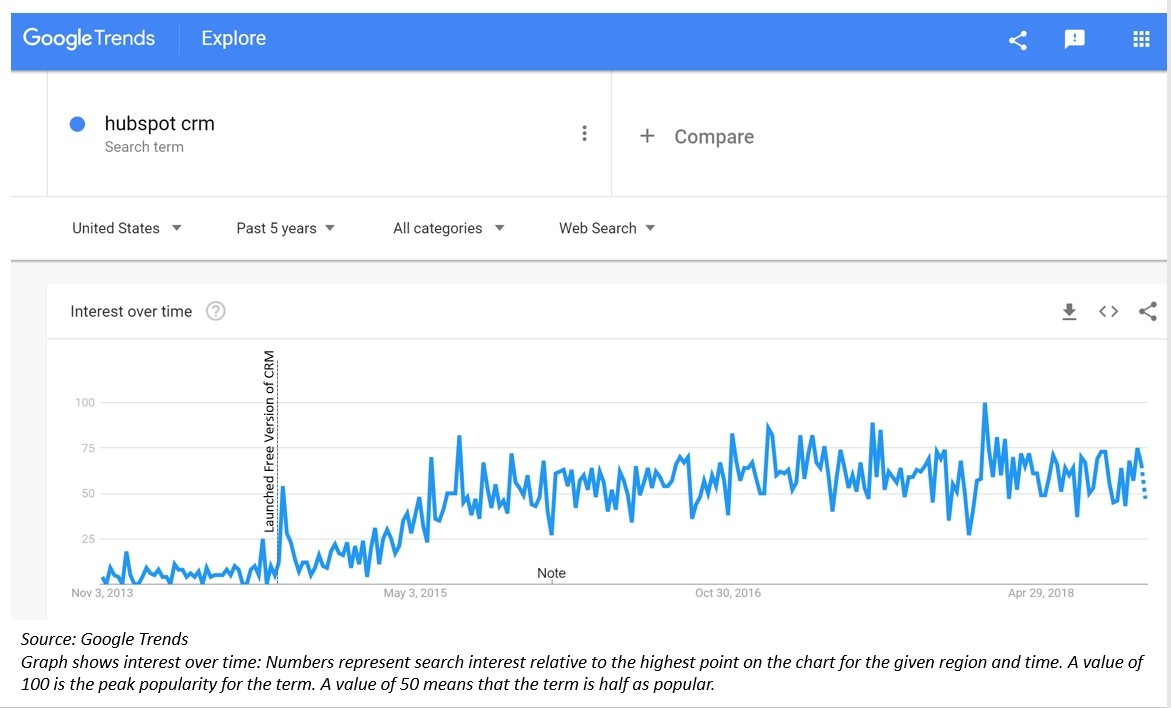
5 Freemium SaaS Models
Software users have different wants and desires, especially in B2B. If you have made the decision to offer freemium to your subscribers, then your job is to decide which freemium business model will be the right fit for your target audience. Let’s dive into the nuances of each one.
1. Limited feature set:
This is the traditional, most popular choice. Offer enough functionality to pique interest and build familiarity while gaining their trust. But if they want additional features, then they’ll have to pay up.
This is also a popular option that allows smaller companies grow into a premium feature set over time, rather than demanding a large investment in the early stages. This pricing model has worked extremely well for Slack (a.k.a. fastest growing SaaS company ever). Their free version packs a lot of punch and is considered by millions as being more functional than limited.
Examples: Slack, HubSpot
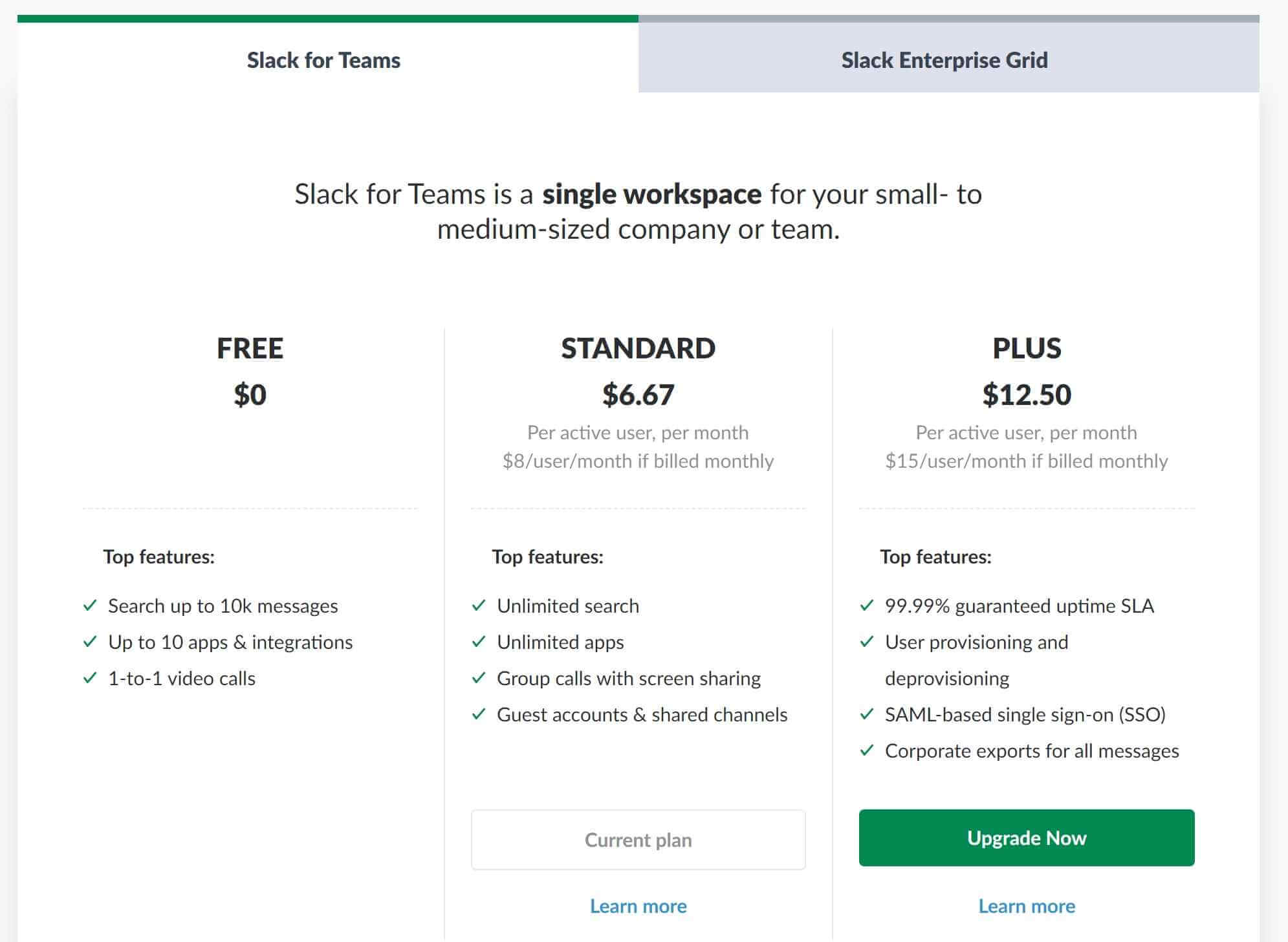
Slack offers a limited (yet highly usable) version for free, while more collaborative options are available for a premium.
2. License limitation:
Another common model that helps smaller companies become acquainted with your software-as-a-service is by limiting the application to just one license (seat). Once they exceed the number of seats, then they’ll have to pay for additional licenses.
One word of caution — ensure that only one login can be used at a time (free loaders love to pass around a single login for the entire company to use to keep it at no cost).
Examples: Drift, Kayako
3. Capacity limitations:
Beyond limiting the number of seats, SaaS companies like to throttle their customers’ usage. Those who use very little storage space are entitled to take advantage of the software service for free, while those who have larger demands (and come with more overhead) are charged a fee which often scales depending on how much storage space (including bandwidth) is consumed in a given month.
Examples: Dropbox, GoogleDrive
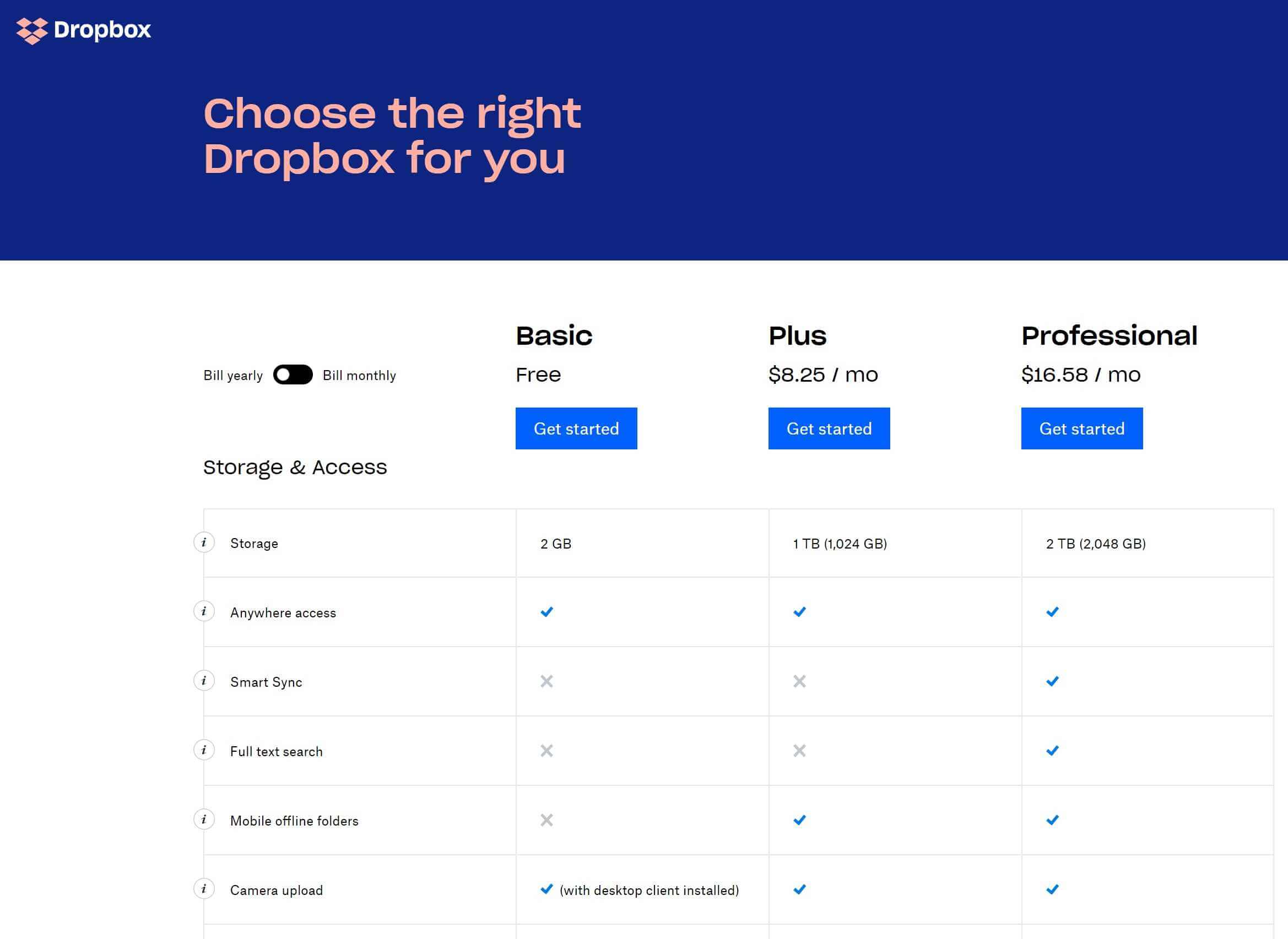
In addition to limiting features, Dropbox limits the amount of storage for its free users.
4. Free for Small Companies:
Not to be confused with the license limitation model, the small company model makes assumptions that, depending on your needs to work with thousands (or hundreds of thousands) contacts, your price will increase as your needs become greater. This model is popular for smaller shops whose revenues are often six figures or less and is common with CRMs and marketing automation tools.
Examples: MailChimp, HubSpot, ChartMogul
5. Ad Supported:
A popular model for in the mobile app arena is to not charge users a fee to use the app, but rather show ads. App-development companies monetize this model in two ways:
First, they generate revenue via the clicks or taps on the mobile ads in a not-so-ethical manner (which I call “oops clicks” due to the small screen and how the ads are accidentally clicked on by end user; the advertiser pays the app firm for every click). Second, they offer an “ad-free” option to remove this annoyance and not display ads.
Examples: USAToday, UltimateGuitar, Pocket Casts 
Like many mobile apps, USA Today provides full features of the app for free if ads are included.
Find the Right Freemium SaaS Models For Your SaaS Startup
Some SaaS companies may offer a blend of the models mentioned above (e.g. Dropbox offers one user license up to 2 GB of storage space for free, with limited functionality). But the common thread is that all free pricing models have some degree of limitation (or annoyance) applied to them, which is natural seeing how SaaS companies are extending (and supporting) a significant portion of their software to deliver value and never send the customer an invoice.
So which freemium SaaS models fit your business the best? And what are the pros and cons of SaaS business models?
That depends on what you’re selling and how much you can afford to support (with as little overhead as possible), along with what your competition is (or is not) doing.
Perform pricing tests to see which freemium SaaS models is most attractive to your end users — while not giving away the farm. Some experts say only 5% of users will ever pay for an online SaaS subscription. So during the test, set up the right SaaS marketing metrics and pay special attention to the free-to-premium conversion rate, and how long it takes them to upgrade to a premium service.
Remember, you have several ways to present your SaaS offer with a $0 price tag – but before rolling out your new free plan, think carefully about the overhead and support costs you will encounter. Choosing the right freemium model will be one of the most important decisions SaaS business owners will have to make.


